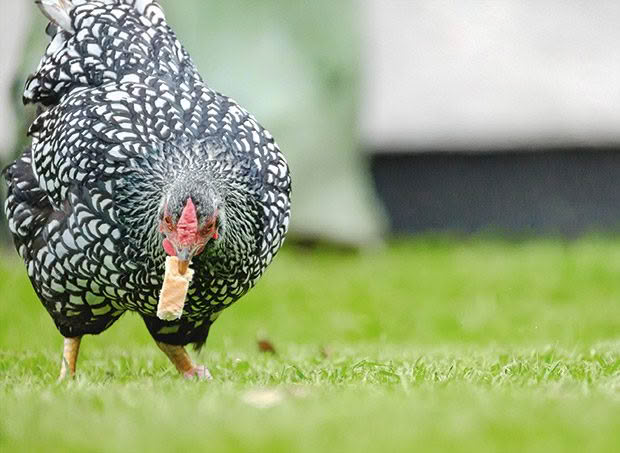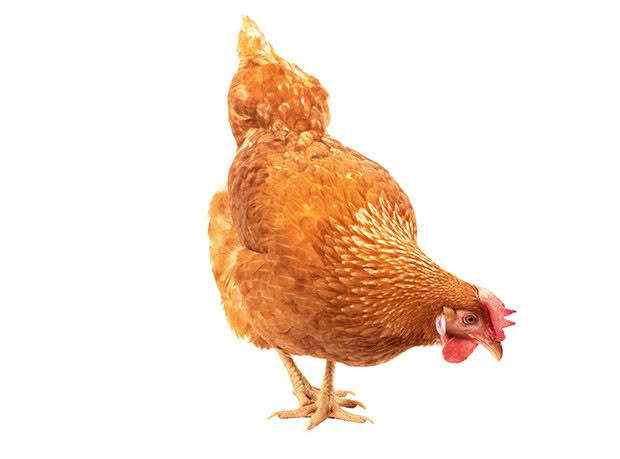Confessions of a Chookaholic, Part Two: When your chicken feed is overindulgent

While it may be tempting to treat your chooks, long-time owners know that bland feed is best.
Words: Nadene Hall
Poultry have specific dietary needs. It’s easy to find the perfect feed, a balanced mix of protein, fat and carbohydrates, in bags at your local supermarket or feed supply store.
Poultry can survive on a low-quality diet, but it’s not going to get you good egg production or growth. Birds will be more prone to disease, and they’re not going to reach their full potential, in size or egg production.
Commercial poultry food might look boring, but dry, hard feed is what poultry are physically best suited to eat. Pellets are the best option for adults, as birds can pick out the bits of mash they like, leaving behind important nutrients like vitamin additives (a powder, added to feed).
DIFFERENT AGED BIRDS HAVE DIFFERENT REQUIREMENTS:
Starter – specially formulated for chicks (0-6 weeks+), usually contains a cocciostat*, low in calcium (less than 1%)
Grower – specially formulated for pullets (6-16 weeks), low in calcium
Layer – specially formulated for laying hens (16 weeks+), high in calcium (approx. 4%)
Meat – specially formulated for meat birds (feed from day 1 until slaughter)
*a medication to help prevent coccidiosis, an often-fatal disease
The average hen (eg, a 2kg brown Shaver or Hyline) will eat 100-120g of feed a day. Much smaller bantams will eat about 80g a day. An adult, heavy-breed hen (3kg) can eat around 180-200g.

Birds are mostly good at self-regulating their diet. Always have a balanced, good quality, nutritious feed on offer; a large flock will need multiple feeders. If a chicken gets too fat (most likely in heavy breeds), you may need to restrict their access to feed so they get 160-170g per day. Water needs to be cold (keep it in a shady spot), fresh and clean, in a clean container.
Layer chicks can move from starter to grower at around 6-8 weeks or stay on starter until they are 16 weeks. Never give layer feed to birds under 16 weeks; the high calcium levels will lead to irreparable, often fatal, damage to the kidneys.
WHY FERMENTING IS A GOOD OPTION
Some people like to feed their hens a warm ‘porridge’ by adding hot water to feed on cold days. However, this can gum up the mouth and crop, and the feed quickly becomes sour and mouldy.
Fermenting feed – even commercial pellets – has a beneficial probiotic effect, improving immunity to disease, and egg numbers and quality.
CONFESSION
“As a child, it was my job to feed the kitchen scraps to the chooks. As an adult, I thought keeping chickens meant feeding kitchen scraps and a bit of wheat, and then you got eggs. The correct way to feed chickens is pellets first, in the morning (or always available in a feeder), then scraps as a treat.”
– Wendy, Tauranga (10 chickens, 13 Muscovy ducks)
READ MORE
Is your chicken gasping for air? It could mean it has gapeworms
Love this story? Subscribe now!
 This article first appeared in NZ Lifestyle Block Magazine.
This article first appeared in NZ Lifestyle Block Magazine.
